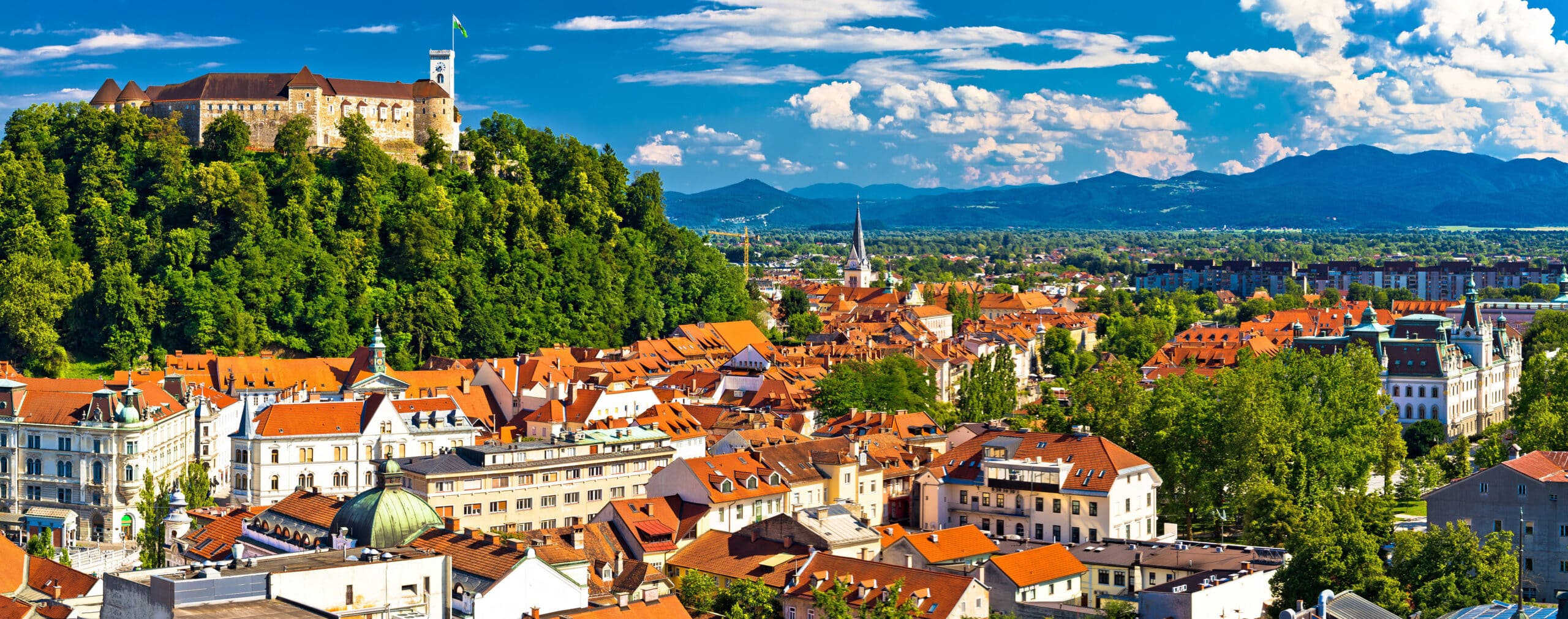Das kristallklare Wasser, die schönen Strände und die größte Dichte an UNESCO Welterbestätten in Europa sind nur einige der Gründe, warum Menschen immer wieder nach Kroatien reisen. Spätestens seit der Serie Game of Thrones ist das Land einem großen Publikum bekannt. Außerdem ist die kroatische Sprache dem Deutschen an manchen Stellen überraschend ähnlich, da hier immer wieder kreative Lehnwörter verwendet werden.
The following five facts about Croatia reveal what else makes the country so fascinating and attractive to businesses.
1. Do you understand German?
Did you know that German was the official language of Croatia 400 years ago? Back then, German soldiers were stationed in the country to fight the Ottoman Empire, German schools were founded, and books were published in German – to name just a few examples. Croatian was only spoken by the general population. As a result, the Croatian language retains many German loan words to this day: for instance, the German word “Besteck” (cutlery) is colloquially referred to as “beštek“. Similarly, “Haarnadel” (hairpin) is “harnadla”, “Gepäck” (luggage) is “gepek”, and “Tankstelle” (gas station) is “tankštela”.
But what language is spoken in Croatia nowadays? Croatian is one of seven South Slavic languages and is closely related to Serbian, Bosnian and Montenegrin. People of these nationalities therefore have no difficulty understanding one another.
Worldwide, a total of five million people speak Croatian – apart from Croatia, it is also one of the official languages of Bosnia and Herzegovina. In other words, a translation into Croatian allows you to cover two markets simultaneously.
Wenn Sie die Sprache lernen möchten, können Sie nicht nur das kroatische Alphabet mit 30 Buchstaben lernen, sondern sich auch an das glagolitische Alphabet mit den uns sehr fremden Schriftzeichen wagen. Aber keine Sorge: zu den schwersten Sprachen der Welt gehört sie trotzdem nicht. Mit kroatischen Wörtern wie „Bok“ für „Hallo“, „Hvala“ für „Danke“ und „Doviđenja“ für „Auf Wiedersehen“ erfreuen Sie jeden Einheimischen. Und wenn alle Stricke reißen sollten, dann verstehen viele Kroaten Englisch und Deutsch.
2. Eat your way through the Balkans
The country was once part of the Roman Empire, then the Ottoman Empire, after which it was occupied by German-speakers. Croatia’s cuisine is as varied as its history: In addition to Turkish and Austrian influences, menus also feature a range of Hungarian delicacies.
Many of the dishes are rustic and filling since they are based on the traditions of farmhouse cooking. Although the majority of recipes are based on meat and potatoes, the country also offers a rich variety of fish and vegetarian dishes. Probably the best-known national dish is ćevapi, or grilled rolls of mincemeat.
3. Neckties and mechanical pencils: Croats are extremely inventive
We’ve all written with one at some point: mechanical pencils and fountain pens. Both were invented in Zagreb by Eduard Slavoljub Penkala, who was originally of Polish extraction and was probably Croatia’s most important inventor. However, he didn’t just create a stir worldwide with his writing utensils. He also filed more than 80 patents that brought us other everyday items such as the first flashlight, a thermos flask and even a rotating toothbrush.
Another Croatian invention that has become a must-have item of attire for every festive occasion is the necktie or cravat. It was worn as part of the military uniform during the 17th century when the wives of soldiers who were sent off to fight would tie them around their husband’s neck as a symbol of their love. Even the French King Louis XIV took a shine to this Croatian fashion accessory and made the necktie famous throughout Europe.
The torpedoes used to sink ships can also be traced back to a Croat. However, the most famous inventor is probably Nikolas Tesla, who make an important contribution to the development of electric motors. Croatia’s economy and the inventiveness of its people are exciting and definitely worthy of closer inspection.
4. Croatia as a miracle of nature: the land of a thousand islands
With a total of 2,715 hours of sunshine each year. Croatia not only puts Germany but even Australian in the shade. In addition to its summer climate, the country impresses with its enchanting scenic backdrop: more than 6,176 kilometers of coastline are spread across 1,246 islands. No less than eleven natural parks, eight national parks and two nature reserves make up almost ten percent of the country.
No other country in Europe offers a greater number of UNESCO world heritage sites: these ten sites include a vast region of lakes and waterfalls, the Plitvice Lakes, and medieval tombstones in Stećci. They also include the historic center of Dubrovnik, whose old, fortified walls that rise above the sparking blue Adriatic Sea will no doubt be familiar to fans of the TV series “Game of Thrones”.
5. Paying with marten pelts instead of euros
Although a member of the European Union since 2013, Croatia still uses its own currency, the Kuna (= “marten”), until 2023. The name pays tribute to the marten pelts that were used in medieval times to pay levies and taxes.
However, the marten is not the only important animal from this Adriatic country. The easily recognizable Dalmatian dog breed comes from the Croatian region of Dalmatia.
Professionally prepared for Croatia
Are you also interesting in exploring business opportunities in this vibrant Adriatic country? Our Croatian native speakers are available to help you expand in Croatia with cultural expertise and professional translations.
Did you enjoy this brief introduction to the country? Then read our other blog posts to learn about beautiful Portugal, Iceland and Turkey.









